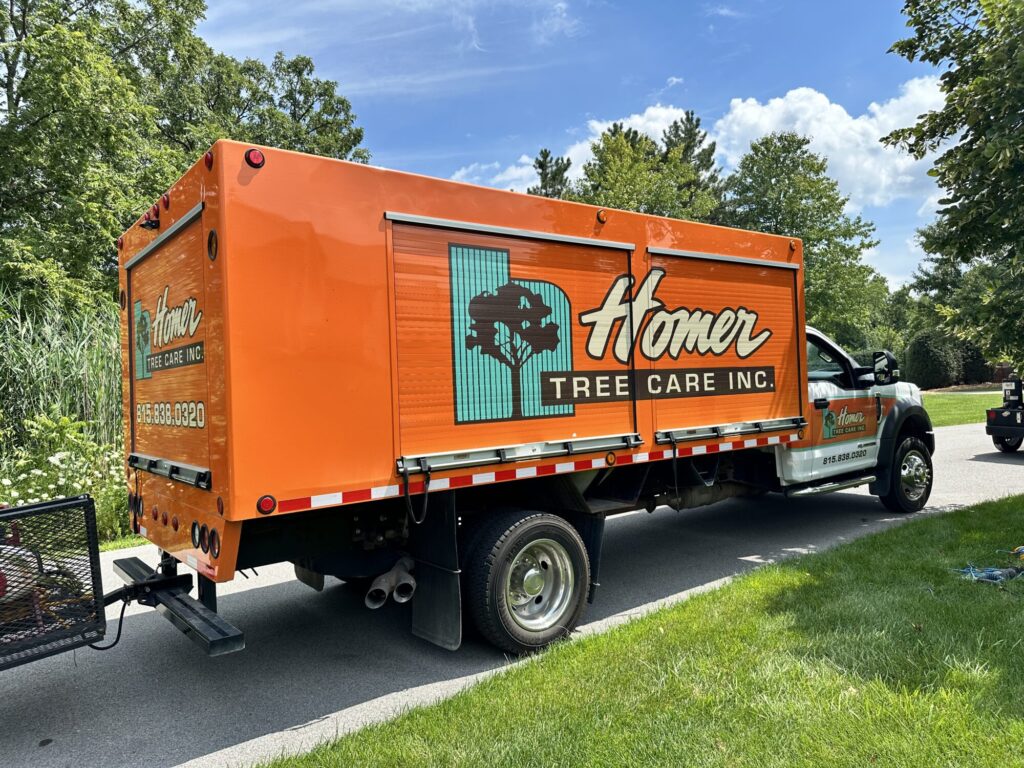Warming temperatures and spring rains (or occasional snow) means the return of beautiful flowers to our urban landscapes in Illinois. Warming temperatures and longer days are our yearly alarm clock waking our landscape trees and shrubs from their winter break and bringing gorgeous blooms of flowers with them. Here are some early blooming trees and shrubs to watch out for in our landscape through this spring.
Eastern Redbud
Of course, our list should start with one of the most amazing North American native flowering trees, the Redbud (Cercis genus). This smaller tree can do well in part shade or full sun and is well adapted to our native soils. There are several cultivated varieties on the market, but every variety has amazing pink to purple flowers in the spring. Eastern Redbud is one of the earliest flowering trees and flowers all along stems and branches, giving a unique appearance. Eastern Redbud trees are also known for their rich pumpkin-colored bark on mature trees and a simple heart-shaped leaf which usually has a bright yellow fall color. Eastern Redbud is also relatively free from major pest or disease problems, but these trees are known to live and mature relatively fast.
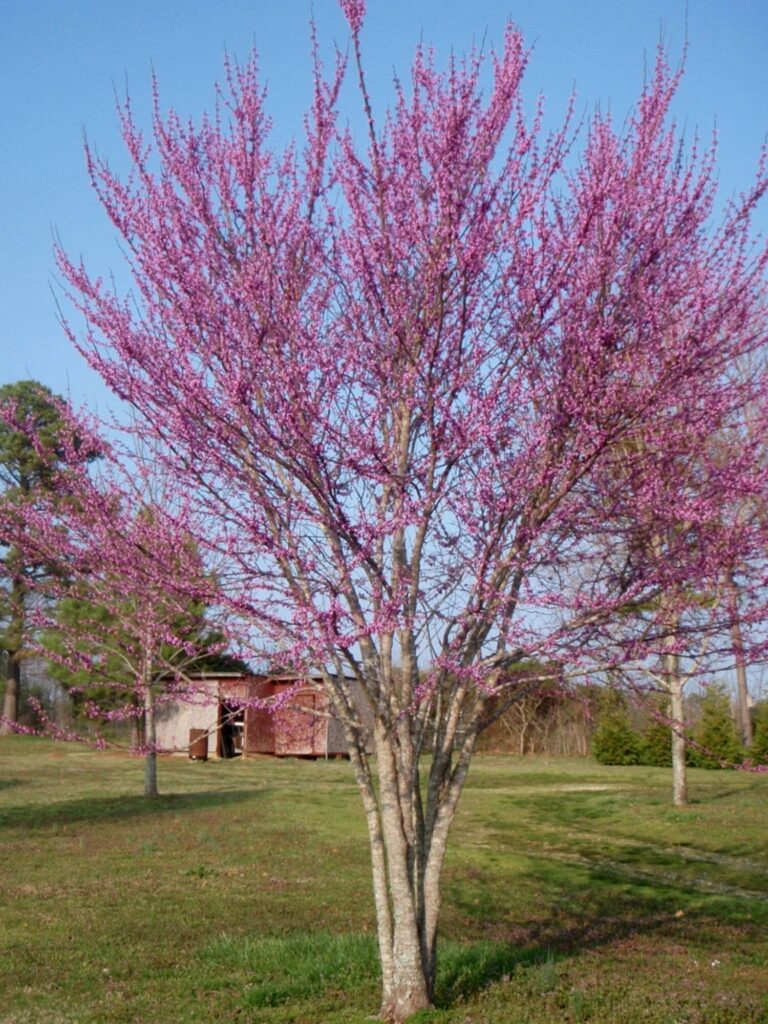
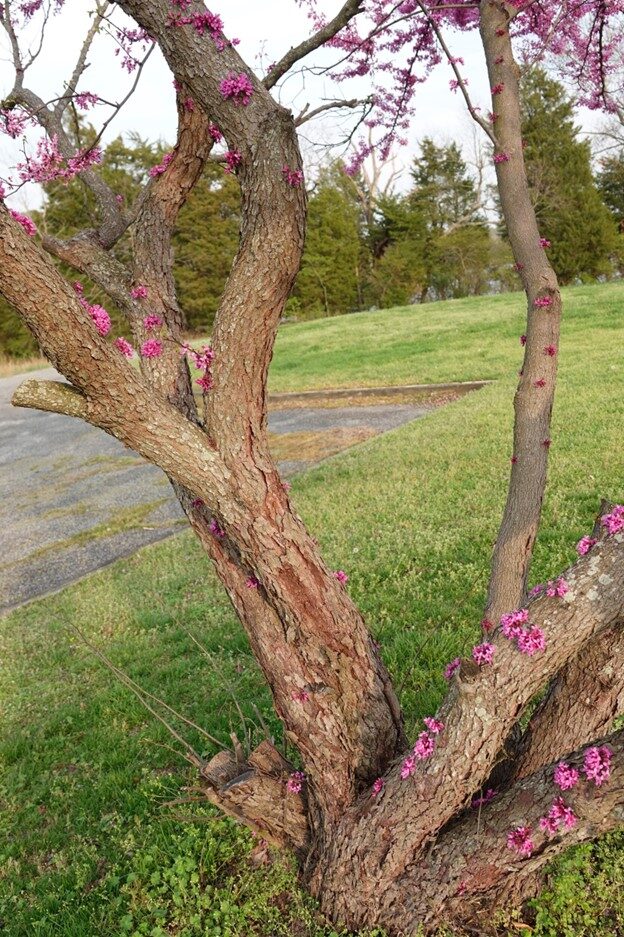
Flowering Crabapple
A mainstay ornamental in the landscape and nursery trade, the flowering crabapple is part of the genus Malus and is related to fruit-bearing apple trees, although the fruit produced by crabapples is generally not edible. Crabapples have been so prolific in the landscape industry that there are hundreds of varieties available, all providing slightly different colors, shapes, and sizes. Flower colors vary quite a bit between varieties, but a cream pink or yellow is very common. The fruit produced can be persistent in some varieties, offering some winter interest. Flowering crabapples are also susceptible to some pretty nasty fungal pathogens including apple scab. This disease attacks the leaves and fruit of the plant, causing premature summer leaf drop in some extreme cases. This disease is not only unsightly, but it also degrades the health of the tree over consecutive years of infection and may lead to decline and eventual mortality. Our plant health care team can help combat this disease with a series of fungal sprays in the springtime, which can protect a tree all season long.
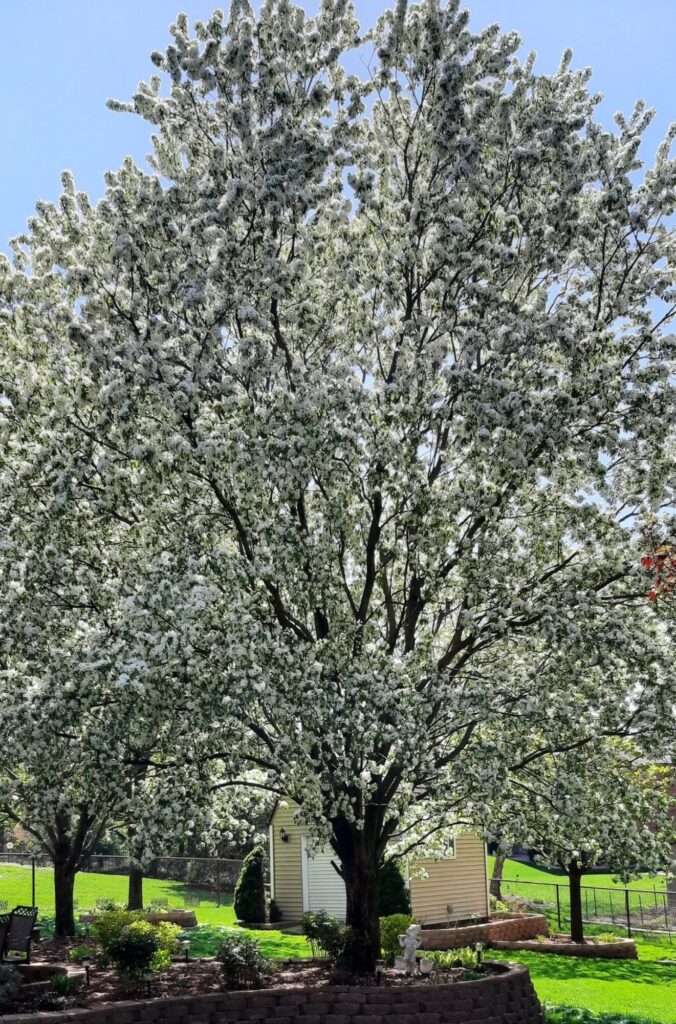
Flowering Dogwood
How do you tell dogwoods apart? By their bark! Dogwoods are in the Cornus genus of trees and shrubs, and there are a number of plants native to our area such as Cornus florida and Cornus alternifolia. These deciduous trees typically grow in the understory where they get part shade or dappled sunlight. They prefer rich well-drained soils slightly on the acidic side. Dogwoods are easy to identify with simple-shaped leaves and opposite leaf and twig arrangement (the exception being Cornus alternifolia). Flowers are varied among species. Cornus florida has a very distinct 4 “petals” which are actually modified leaves and not true petals. Cornus mas has a more typical true flower clustered along the stems of the tree. Cornus alternifolia has “cymes” of small white flowers grown in clusters. Some dogwoods can also be susceptible to a number of pathogens which may require fungicidal sprays in early spring similar to crabapples.

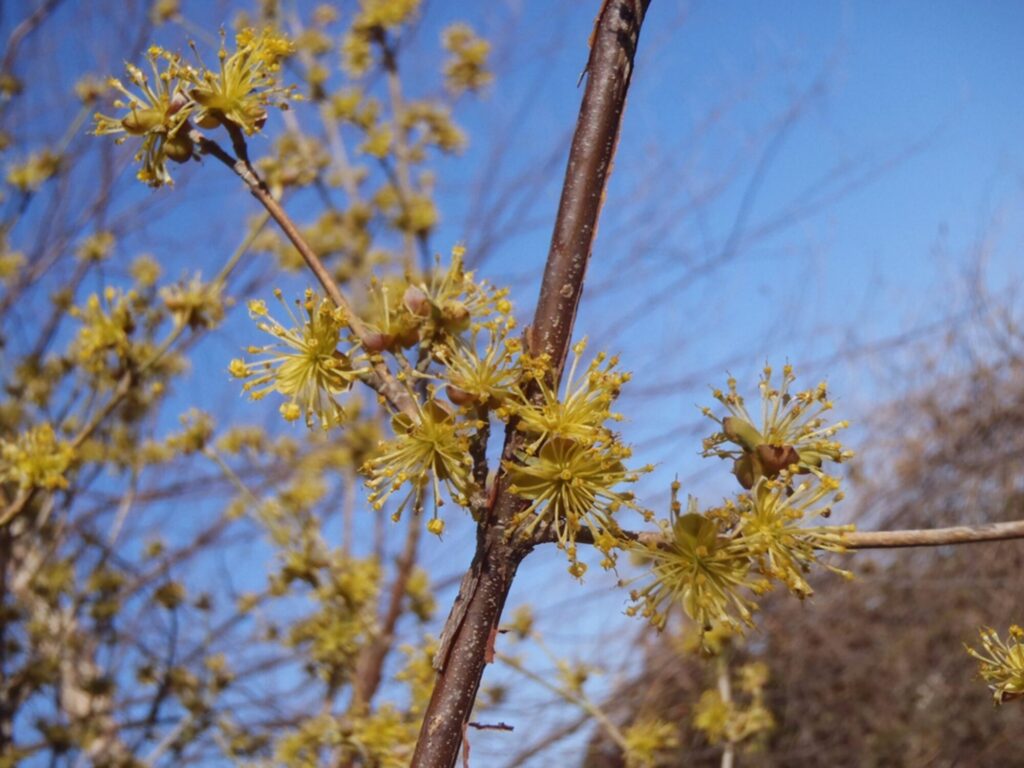
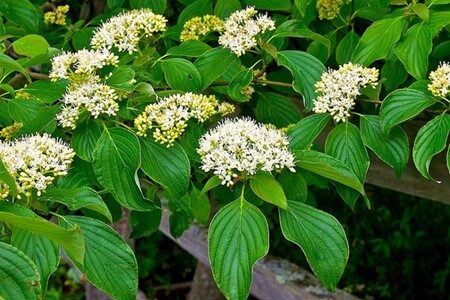
Serviceberry
Another excellent Illinois native ornamental tree, the Serviceberry can grow as either a multi-stem or tree form to a medium height around 30-40 feet tall with a moderate 25-30 foot spread. Serviceberry is in the genus Amelanchier and has a number of species each having slight differences in shape, size, and growing conditions. Serviceberry produces clusters of white flowers typically in April and May, which produce really delicious edible berry fruits shortly after. Birds and other animals will forage the berries through summer, but the fruit may develop a fungus later in the season. The fungus is largely harmless to the health of the plant but may be unsightly. Serviceberry produces brilliant fall colors ranging from yellow, to orange, and bright red. It’s an excellent landscape plant that’s tough and moderate growing.
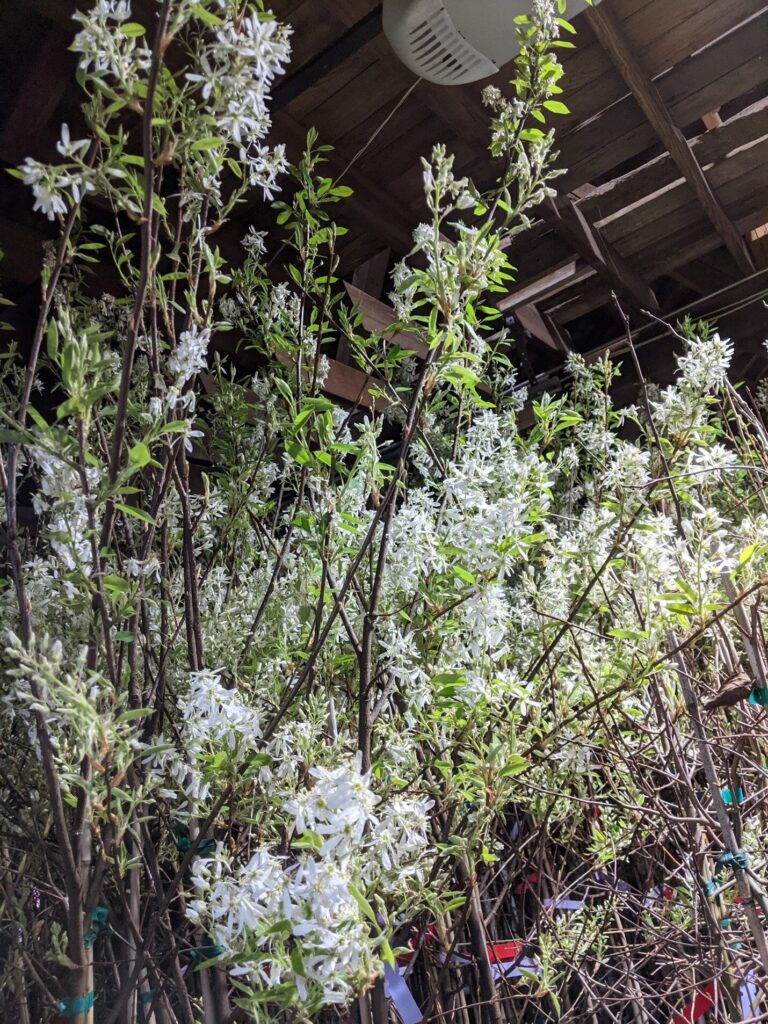
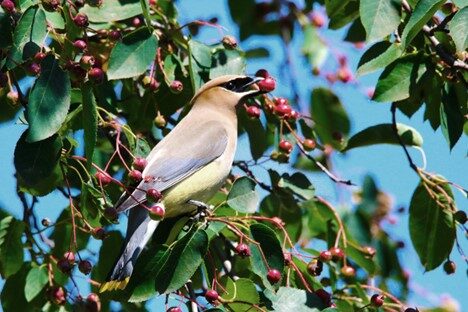
Magnolia
Of course one of the most awe-inspiring flowering trees in our area is the Magnolia. Magnolia trees are usually flowering around mid-late April depending on the weather. The flowers are enormous and usually short-lived. Colors may range from pure white to creamy pink, pale yellows, and even darker rich pink-reds. Magnolia is a long sought-after landscape plant due to its spectacular color show, but large mature specimens are not always common. This tree tends to grow more slowly and can host a number of pests and diseases which may cause decline before reaching mature size. Scale pests are prevalent and have been very prolific over the 2023 season. Our plant health care team can help keep these pests in check with specialized insecticide applications at appropriate timings. Magnolia prefer a slightly acidic soil that can stay moist but also drain well. Protection from harsh winds can be very beneficial since the limbs may be easy to snap or break in heavy wind conditions.
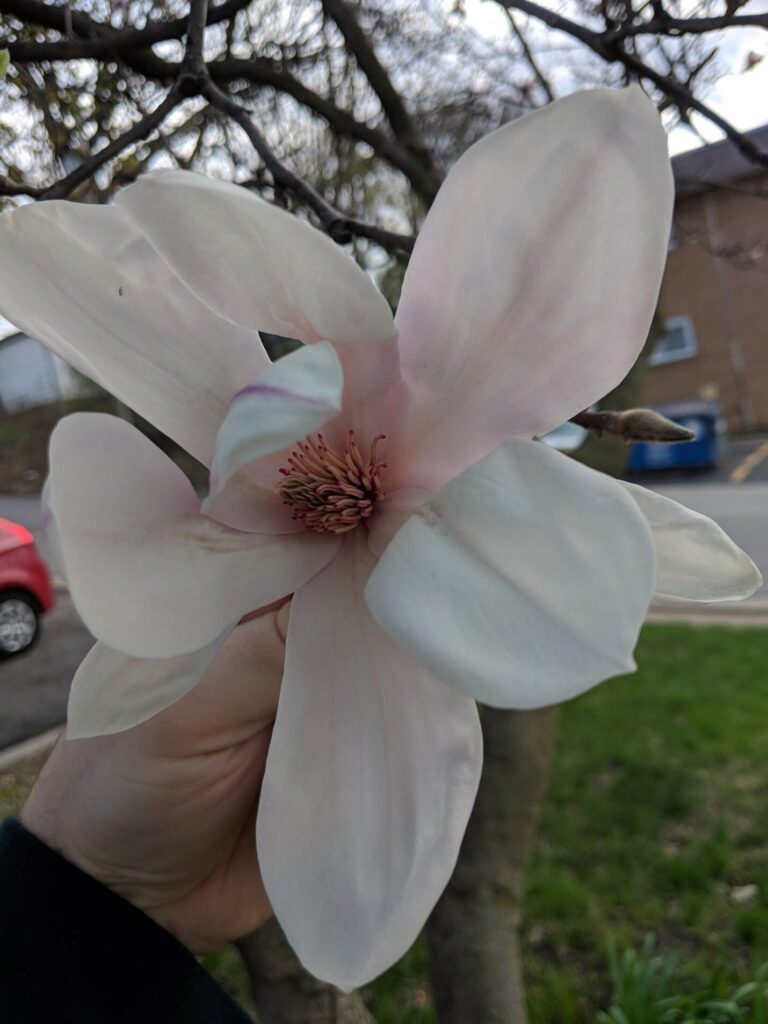
Flowers on Shade Trees
Some less obvious but still important blooms may be spotted on our larger shade trees in the landscape. Oaks, maples, birches, etc. will also produce flowers in spring or summer which may be less conspicuous but can be very ecologically important and still visually appealing in their own ways. We’ll share some here to show examples without going into specific details.
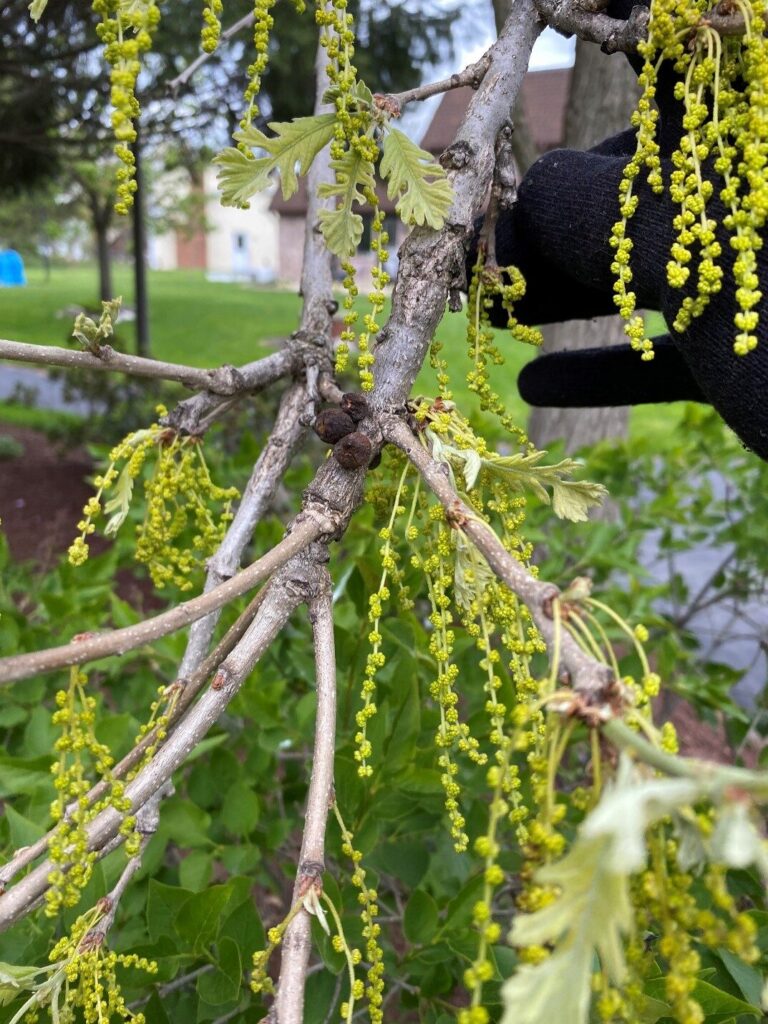

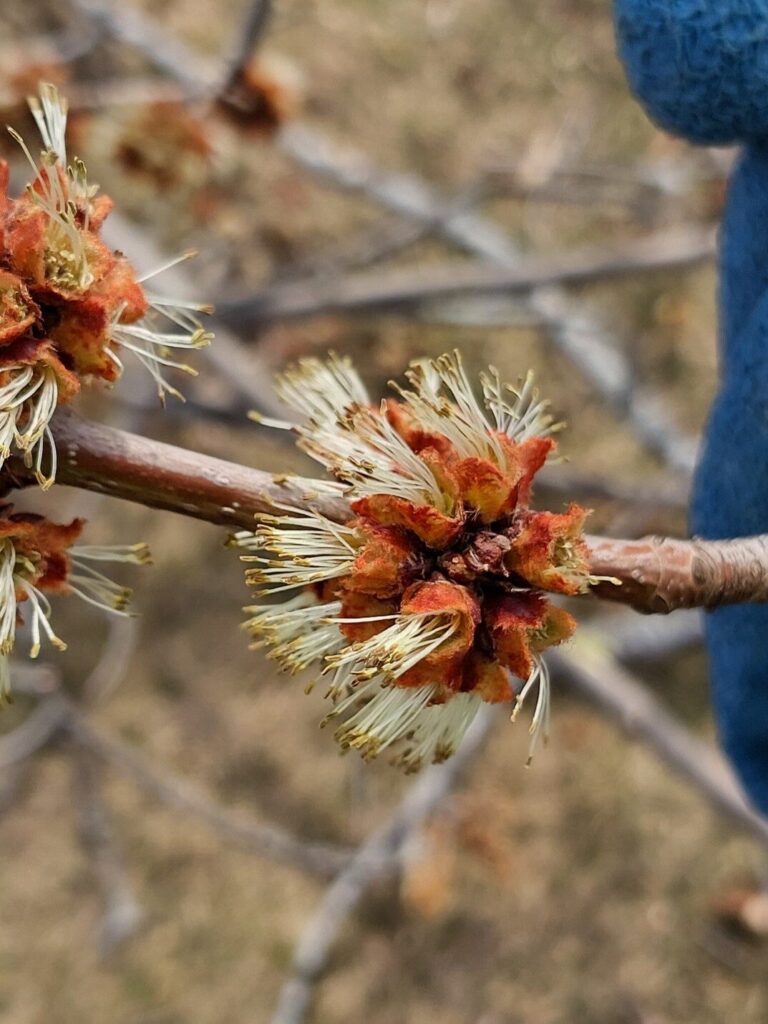
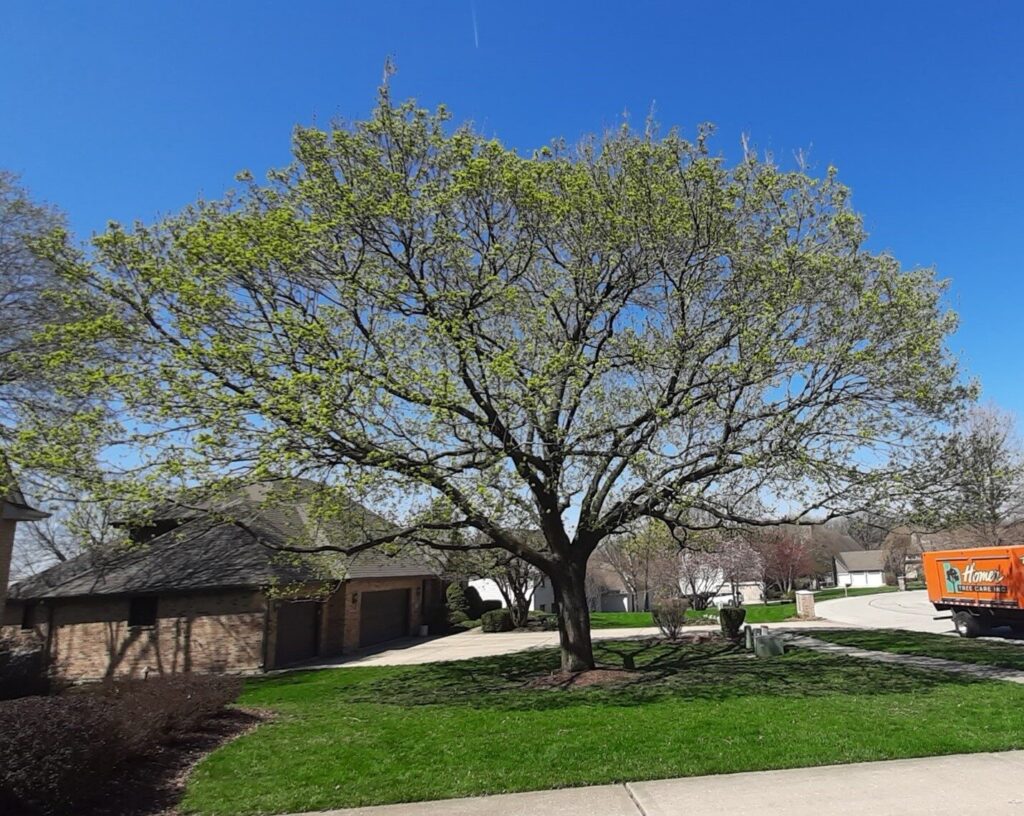
We hope this article helps you identify and appreciate our various spring-flowering trees and shrubs. If you have a flowering tree or shrub on your property that may be looking a little sad or growing slowly, our plant health care team is here to help bring vigor back to your landscape and assist in managing any pest or disease problems afflicting your landscape. Call us today for an assessment from our expert arborist staff.

